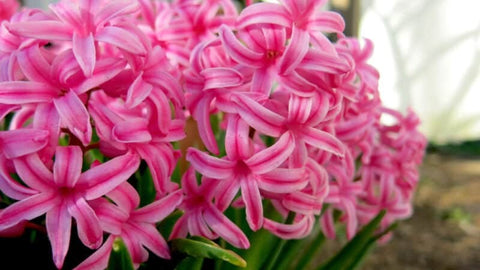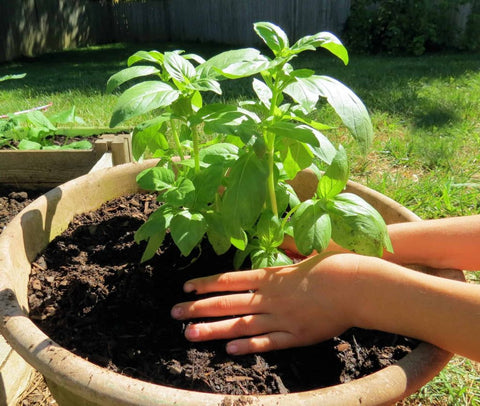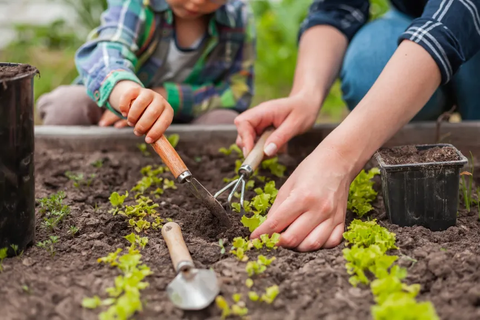Peppers are a diverse and vibrant addition to any garden. From fiery hot varieties that ignite your taste buds to sweet peppers that add a burst of color and flavor to your dishes, there's a pepper for every palate. One of the best ways to cultivate peppers, whether you're a seasoned gardener or a beginner, is in a raised garden bed. In this comprehensive guide, we'll explore the exciting world of peppers, covering everything from choosing the right varieties to nurturing your plants and harvesting a bountiful crop in your raised bed garden.The following content also has some reference value for raised garden beds.
Why Choose a Raised Garden Bed for Peppers?
Before we dive into the specifics of growing peppers, let's discuss why raised garden beds are an excellent choice for cultivating these flavorful veggies:
Better Drainage
Raised garden beds typically have well-draining soil, which is crucial for peppers as they dislike waterlogged conditions.
Warmer Soil
Peppers thrive in warm soil, and raised beds tend to heat up earlier in the season, giving your plants a head start.
Improved Control
With a raised bed, you have better control over the quality of your soil, making it easier to maintain optimal growing conditions.
Pest Management
Raised beds can be fitted with protective covers or screens to deter pests like rabbits and birds from nibbling on your pepper plants.
Aesthetic Appeal
Raised beds can be designed to complement your garden's aesthetics, making them an attractive addition to your outdoor space.
 Selecting Pepper Varieties
Selecting Pepper Varieties
Peppers come in a wide range of flavors, sizes, and heat levels. Here are some popular pepper varieties to consider planting in your raised garden bed:
1. Bell Peppers
Bell peppers are sweet and colorful, making them a versatile addition to salads, stir-fries, and stuffed pepper dishes. Varieties include red, yellow, green, and orange.
2. Jalapeño Peppers
These moderately spicy peppers are perfect for adding a kick to salsas and Mexican cuisine.
3. Habanero Peppers
If you're a fan of extreme heat, habaneros are one of the hottest peppers available. Handle them with care, and use them sparingly in spicy dishes.
4. Cayenne Peppers
Cayenne peppers are known for their fiery heat and are commonly used to make hot sauces and spice up recipes.
5. Poblano Peppers
Poblanos have a mild to medium heat level and are frequently used in Mexican dishes, especially for making chiles rellenos.
6. Banana Peppers
Banana peppers are mild and slightly sweet, making them a popular choice for pickling or adding a mild kick to sandwiches and salads.
7. Thai Chilis
These tiny, fiery peppers are a staple in Thai cuisine and add intense heat to dishes.
Once you've decided on the pepper varieties you want to grow, it's time to prepare your raised garden bed and get planting.
Planting Peppers in a Raised Garden Bed
Here's a step-by-step guide to planting peppers in your raised garden bed:
Choose the Right Location
Select a sunny spot for your raised bed where peppers can receive at least 6-8 hours of sunlight daily.
 Prepare the Soil
Prepare the Soil
Fill your raised bed with well-draining soil rich in organic matter. Peppers thrive in slightly acidic to neutral soil with a pH level of 6.0 to 6.8.
Create Rows
Space rows in your raised bed approximately 18-24 inches apart, leaving enough room for the pepper plants to grow.
Plant Seedlings
Plant pepper seedlings in the rows, spacing them about 18 inches apart. Make sure to bury the seedlings up to their first set of leaves to encourage strong root development.
Watering
Keep the soil consistently moist but not waterlogged. Use a soaker hose or drip irrigation system to water at the base of the plants to prevent foliar diseases.
Mulch
Apply a layer of organic mulch, such as straw or wood chips, around your pepper plants to help retain moisture and suppress weeds.
Support
Taller pepper varieties may require staking or support as they grow to prevent bending or breaking.
Fertilization
Feed your pepper plants with a balanced fertilizer, or use organic options like compost or well-rotted manure to provide essential nutrients.
Pest Management
Monitor your plants for common pepper pests like aphids and caterpillars. You can use neem oil or organic insecticidal soap to manage infestations.
 Caring for Your Pepper Plants
Caring for Your Pepper Plants
To ensure a healthy and productive pepper crop, follow these care tips:
Pruning
Pinch off the first flowers that appear on young pepper plants to encourage bushier growth. Remove any damaged or yellowing leaves throughout the growing season.
Thinning
Thin out excess pepper fruits if the plants produce more than they can support. This allows the remaining peppers to grow larger.
Consistent Watering
Water your pepper plants consistently to prevent issues like blossom end rot. Uneven watering can lead to calcium deficiencies in the fruit.
Harvesting
Peppers can be harvested at various stages of maturity. For green bell peppers, pick them when they're full-sized and green. For sweeter red, yellow, or orange varieties, wait until they've ripened to their respective colors. Hot peppers can be harvested when they reach the desired level of spiciness.
Enjoying Your Pepper Harvest
Now that you've successfully grown a colorful and flavorful pepper crop in your raised garden bed, it's time to savor the fruits of your labor. Here are some delicious ways to enjoy your peppers:
Stuffed Peppers
Hollow out bell peppers and stuff them with a mixture of ground meat, rice, vegetables, and spices. Bake until tender for a hearty meal.
Salsas and Dips
Chop up your jalapeños, habaneros, or other hot peppers to make spicy salsas, hot sauces, or dips.
Roasted Peppers
Roasting peppers enhances their flavor. You can roast them on a grill, in the oven, or directly over a gas flame. Remove the skin, and use them in sandwiches, salads, or as a side dish.
Pickling
Preserve your banana peppers by pickling them. They make a tangy addition to sandwiches and salads.
Pepper Jellies
Experiment with making your own pepper jellies to serve with crackers and cheese or as a glaze for meats.
Stir-Fries and Curries
Add sliced or diced peppers to stir-fries and curries for vibrant color and flavor.
Fresh Snacking
Enjoy sweet pepper slices with hummus or your favorite dip for a healthy snack.
Conclusion
Growing peppers in a raised garden bed is a rewarding and enjoyable gardening experience. With proper care, you can enjoy a variety of flavors and spice levels in your pepper harvest. Whether you prefer sweet bell peppers or fiery habaneros, your raised bed can yield a bountiful crop of these colorful and versatile veggies. So, roll up your sleeves, prepare your raised garden bed, and embark on a pepper-growing adventure that will delight your taste buds and enhance your culinary creations throughout the fall season. Happy gardening!









